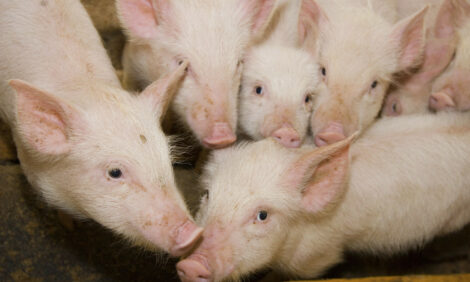



Canada Hog Markets - Liquidation, How Much?
CANADA - Those of you who are regular readers of the Genesus Global Market Report will know that all hog-producing areas around the world are being battered by high grain prices and perhaps as challenging, extremely volatile pricing with daily swings matching what used to be close to annual swings, writes Bob Fraser.Then some areas have the double barrel of depressed hog prices to go along with the high grain prices. Canada is unfortunately firmly in this latter category.
If we take a look at the OMAFRA Weekly Hog Market Facts compiled by John Bancroft, Market Strategies Program Lead, Stratford, we see the continued erosion of estimated margin after feeder pig and feed for the last five weeks from –($3.28) to –($37.04) - a swing of $70 plus in two months.

So although we have seen some tempering of feed prices recently, it hasn’t been great enough to offset the decline in hog prices.
So then of course the “sixty four dollar question“ becomes how is this translating into liquidation. I will give you our take across Canada. This is from “the ground“ so therefore not as scientific as USDA or Statistics Canada but I will try to explain our methodology and how we drew our conclusions. Then like any market intelligence you can judge for your self its merits or lack there of.
As I discussed in my last commentary I’ve been working with the production manager of the boar stud (Ontario Swine Improvement) we do business with who has been compiling a list of producers who have stopped their standing semen order and haven’t gone elsewhere. As I said before this should be as reliable as any, if you’ve stopped breeding you’re probably headed to the door. This list now comprises 23 producers and some 12,000 sows moving out of production. Then as OSI has perhaps a quarter to a third of the A.I. business you could perhaps make a case for tripling the number. However to be conservative I feel you could double the number to 24,000 sows coming out of the Ontario. Similar analysis in Manitoba and crosschecking with other industry players and cull sow dealers places their withdrawal from the industry at 28,000 sows. Alberta we believe we have a reliable handle on 10,000 sows. Quebec our North Carolina, which is a highly integrated industry, is also feeling the pressure with certainly further consolidation if not decline. So with some 62,000 sows by my crude field survey we begin to approach 5% on an approximate 1.3 million Canadian herd. This is before we consider another approximate 5% in the 40,000 sows with Big Sky and 28,000 sows with Puratone, both corporate entities presently in receivership. Now conventional wisdom says these large operations never “go dark“ but just change hands. Perhaps but these are hardly conventional times and it is challenging to envision a buyer beyond another corporate entity and corporate pig production hasn’t proven highly successful of late in this country.
So there you have it perhaps as much as 10% of the Canadian sow herd in play. Whether we end up with that much in fact liquidating remains to be seen but ultimately a 100,000 sow reduction appears plausible if not likely. Because unfortunately this is some distance from being over. The reward for getting there is likely to be significant but as they say you’ve got to get there!
Crops
In my last commentary I suggested that crops here looked to have opportunity to be average to above average. Now I appreciate that runs counter to the average producer psyche where it’s “too hot, too cold, too wet, too dry or at best too good to last“. However again a salesman’s total unscientific survey canvassing soybean yields has recorded 50 bushels on the low end to 70 bushels on the high end with a crude average running towards high fifties. So even from a producer prospective I believe that qualifies as average to even above for any kind of a year let alone a dry one. Reports on corn still remain scattered with suggestions of lots of variability but I expect when that’s also all done we will be seen of have fared considerably better than many on the continent.
Prospects
My crystal ball is certainly no better clear than anyone else’s in these tumultuous times. However I spent ten years trading SEWs and feeder pigs that I have come to view them as our “canary in the mine“ as to what may be coming. So if we look again to John Bancroft’s excellent charts below of US early wean and feeder pig prices we see though severely depressed adherence to seasonal patterns and the beginning of the march out of the mud. I expect we have opportunity to touch $50 early weans before year end with good potential beyond that in the New Year. So not the end but perhaps the beginning of the end.










